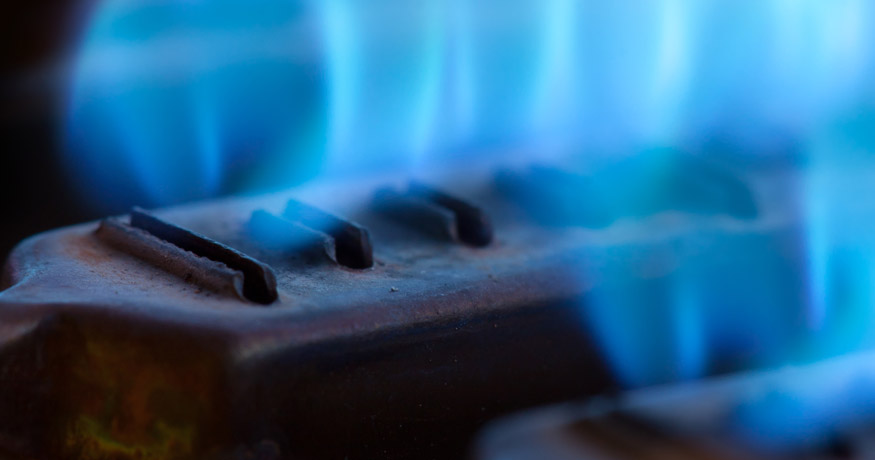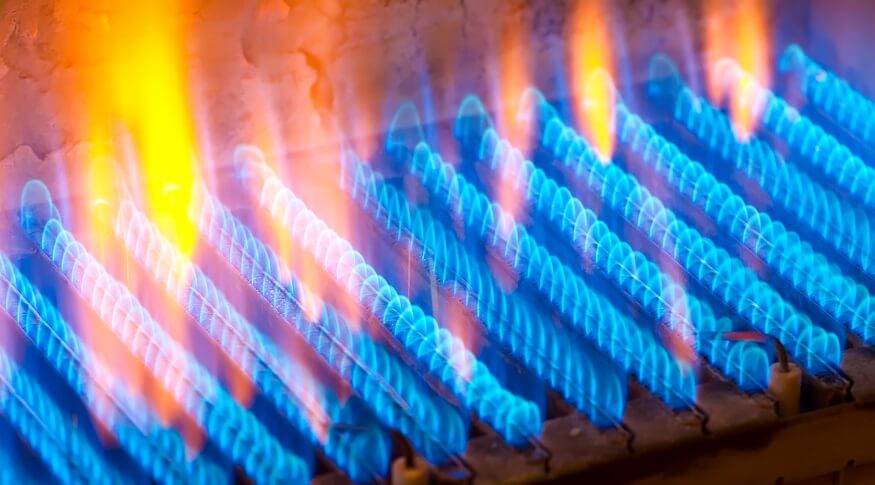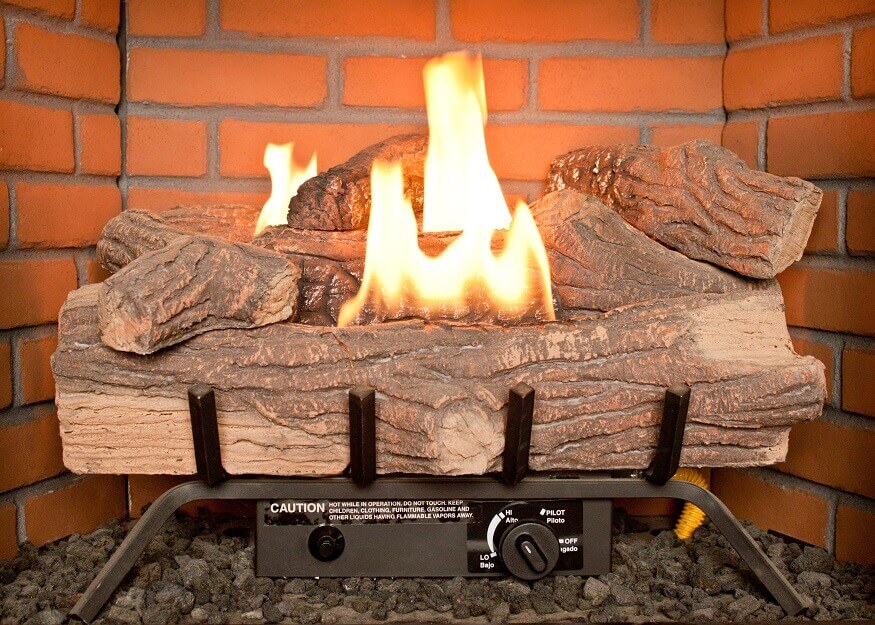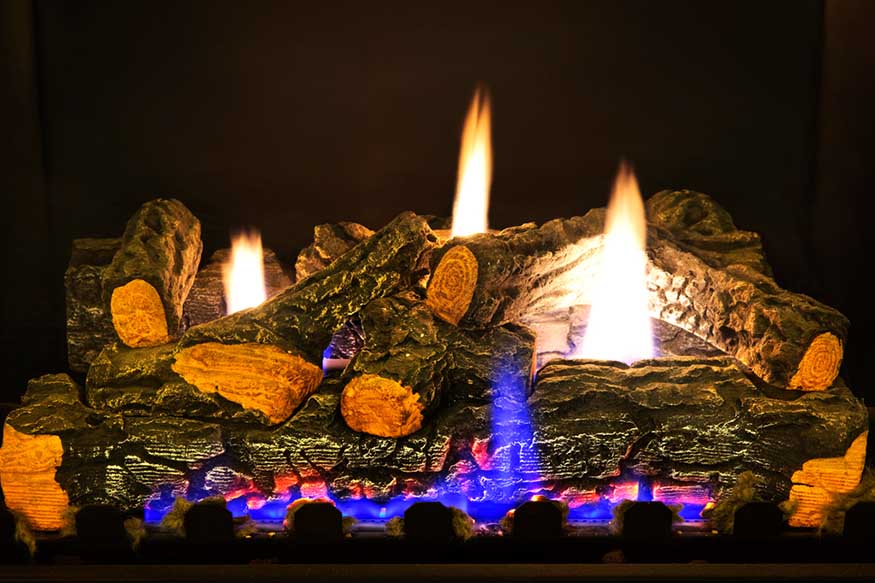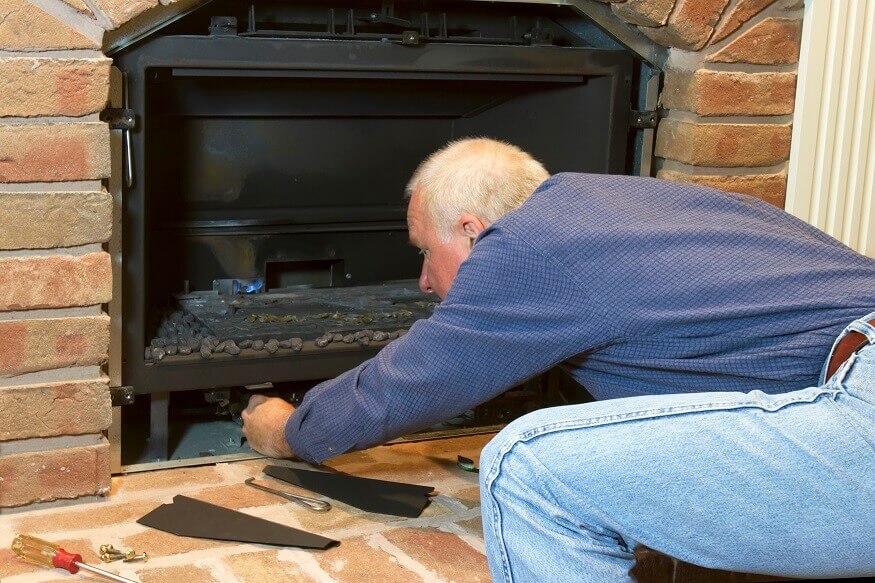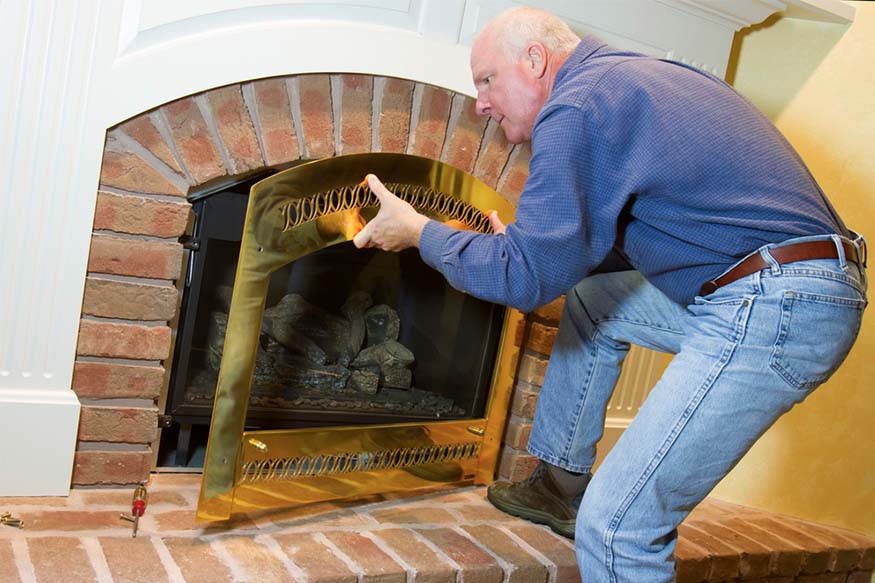Every year, new gas fireplaces seem to get smarter and easier to use.
This kind of advancement is perfect if you are the type of person who loves your gas fireplace but doesn’t necessarily need to know how it works.
But there is one feature of all gas appliances that you should be familiar with. Unfortunately, it happens to be the one piece of the fireplace puzzle that people have the most questions about.
Of course, I’m talking about the pilot light.
To help you understand more about this vital part of your fireplace, we have put together a comprehensive list of fireplace pilot light frequently asked questions. We have all the answers to help you understand how your pilot light functions, what to do when something goes wrong, and all the safety precautions you need to be aware of.
Disclosure:It is important you understand that we may receive commissions when you click our links and make purchases. However, this does not impact our reviews and comparisons. All opinions are our own we pride ourselves on keeping our articles fair and balanced. For more info see our disclosure statement.
Gas Fireplace Pilot Light FAQ
Ready to get to know your fireplace pilot light a little better? Let’s dig in!
Firstly: messing with gas is dangerous. If you aren’t sure if it’s safe to work on, then get a professional.
What is a gas pilot light?
A pilot light is a small flame that is kept alight using a steady, small stream of gas. This continuous flame is necessary to light large burners such as those found in gas fireplaces.
When the fireplace or propane heater is turned on, the pilot light serves as an ignition source for the larger sweep of gas released from the burner. It also provides the energy necessary to open and close certain gas valves during startup.
Some newer models of gas fireplaces utilize an electric ignitor in place of a traditional standing gas pilot light. These units require electricity or battery backup to function and may not be useful in a power-out emergency.
How much does it cost to run a gas fireplace pilot light?
According to Anderson Fireplace, gas pilot lights use about 1,000 BTUs per hour. Based on the average cost of natural gas, this comes out to about $7 to $10 per month.
This amount can easily add up if the unit is left running all year long–you could potentially be spending up to $120 per year on gas just to keep your pilot light going.
To save money, some people will turn off their gas feed between uses, thereby turning off their pilot light. The downside to this, of course, is that you will need to manually relight your pilot every time you want to use your fireplace.
A better alternative would be to turn off the gas feed in the spring and relight the pilot in the fall and leave it running through the colder months.
Should the pilot light always be on in a gas fireplace?
Most gas fireplaces rely on a “continuous pilot light,” a type of pilot that remains lit so long as gas is flowing to the unit. Some newer, more energy-efficient models rely on an electronic ignition that only lights the pilot when the fireplace itself is turned on.
Electronic ignition fireplaces rely on battery backup or electricity to operate. With these units, you will not see a pilot flame unless the fireplace is in use.
If you have a continuous pilot light system, you should always see a pilot flame unless you have manually turned the system off. Not seeing a pilot flame could indicate a problem.
It is a good idea to familiarize yourself with which type of unit you have so you will know if an unlit pilot is indicative of a problem or not.
Is it safe to leave the pilot light on all the time?
Generally speaking, it is safe to leave your continuous pilot light on at all times, assuming it stays lit (more on this in a moment).
While it does cost more to keep your pilot light on in between uses, it can actually have some benefits to your system.
By keeping gas flowing through the pipes and valves consistently, you will prevent insects from setting up shop inside the unit. Spider webs and other bug debris can clog the pilot light tubing and compromise your entire system.
Keeping the pilot light running also prevents moisture build-up in the pipes. Since excess moisture increases the rate of corrosion, this can help your system last longer.
The cost of leaving the pilot light running should be weighed against the benefits to your system that come with leaving it on.
Is it ok to leave the pilot light on for your gas fireplace in summer?
As we discussed above, the issue of leaving a pilot light on all summer has less to do with safety and more to do with cost.
While the benefits of leaving your pilot light on are probably worth this extra cost and the ease of turning on the fireplace in the winter, it is generally not worth it to keep it on all summer. The exception to this might be if you live somewhere with an extraordinary short warm season.
In most climates, however, it is best to shut your system down once you are done using it in the spring. When you do this, make sure to turn off the main gas feed to the unit.
Once the weather starts to cool again, have your system serviced. Cleaning the unit will remove any debris and bugs that moved into the pipes over the summer and will assure everything is functioning properly. Once the system is given a thumbs up, you or your service provider can relight the pilot.
Is it dangerous if the pilot light goes out?
Since a pilot light is a flame fed by a continuous flow of gas, then it stands to reason that the flame going out would allow gas to flow freely into your house.
While this is a possibility, it is actually less likely to happen than you might think.
The number one reason a pilot light goes out is because gas flow gets disrupted. When this happens, no gas is present to flow into your home.
Even if the pilot goes out and gas continues to flow, almost all modern gas appliances have safety measures in place to stop the gas flow if a flame is not present. The most common safeguard is a temperature-sensitive valve near the pilot flame that will automatically close if it gets too cool.
No matter the reason for a pilot going out or the safety measures in place, it is always prudent to manually switch off the gas feed for a time before relighting the pilot. This will allow any residual gas in the room to dissipate before a new flame is introduced.
Of course, if you smell gas in the area of your fireplace you should immediately shut off the feed, open windows to increase ventilation, and call a professional to check for issues.
What should I do when my pilot light goes out?
If you notice your pilot light has gone out, the first thing you should do is shut off the gas feed and wait a few minutes. This will assure no excess gas has built up in the system or in the room.
Once you have given any excess gas a chance to dissipate, follow the instructions in your system’s manual to relight the pilot. Often, this will involve manually depressing the pilot valve and using an electric ignitor or match to light the pilot.
Keep a close eye on your pilot light once you have restored the flame. If the flame looks different than normal or goes out again, something may be wrong with your system.
Reference your owner’s manual for further instruction. It may be necessary to get a professional out to service the unit and check for any malfunctioning valves or safety features.
Want Expert Help?
Click the button below and we will get a local contractor to contact you for a FREE QUOTE!
What do I do when my gas pilot light won’t light?
If the pilot will not light, double-check your gas feed. The gas line to the system itself needs to be open.
If this isn’t the issue, then there may be a problem with the gas feed to your home. Call your gas service provider to check that your account is up to date. They should be able to tell you if your service is working properly and, if not, they should send out a technician to diagnose the problem.
If gas is flowing into your system properly and your pilot still will not light, this could indicate a number of issues.
There may be a problem with the spark ignitor or thermocouple. Identify these parts using your manual. Clear away any debris and check for proper installation.
Turning off your gas feed then blowing compressed air into the pilot apparatus and surrounding parts can help clear away debris, as well.
Wait a moment and then turn the gas valve back on and try to relight the pilot again.
If it still won’t light, you are likely dealing with a loose connection, defective valve, or bad ignition switch or thermocouple. At this point, your best bet is to call a professional to come out and evaluate the unit. Make sure to turn the pilot valve off in the meantime.
How do you turn off the pilot light on a gas fireplace?
If your fireplace is malfunctioning or you just don’t plan on using it for a while, you may want to turn off the pilot light. Luckily, this is usually a fairly straightforward process.
For most fireplaces, all you will need to do is open the front of the unit to access the pilot, then turn the pilot light valve to the off position. For added safety, it is always recommended to then turn the main gas shutoff valve for the system to the off position, as well.
If your pilot light valve is not immediately apparent, reference your fireplace user manual to assure you are turning off the right valve.
Final Takeaways on Gas Fireplace Pilot Light Safety
The more you know about pilot lights, the less scary this necessary part of your fireplace system seems to be.
Having your fireplace serviced each year, taking proper precautions if your pilot light does go out, and knowing how to relight it when necessary, will help keep you and your family safe.
Of course, if you find yourself questioning anything about your pilot light in the future, know that you can always come back to this fireplace pilot light frequently asked questions guide to find the answers you need.
Want Expert Help?
Click the button below we will get a local contractor to contact you for a FREE QUOTE!
